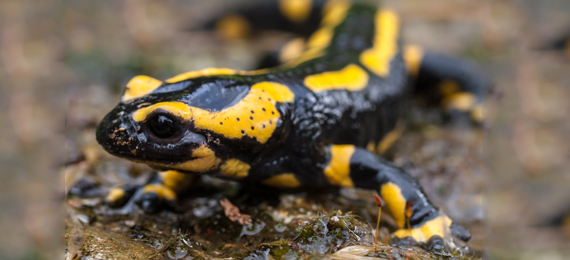
What is a Salamander?
Salamander begin life in the water but lives its adult life on land. A salamander is a remarkable amphibian resembling a lizard but with smooth, moist skin. There are different types of salamanders, some have two legs and some have four legs, some have lungs, some have gills, and some have neither and they breathe through their skin. Read on to discover some interesting Salamander facts.
Facts about Salamanders:
1. Regeneration Champions:
Salamanders are rockstars when it comes to regeneration. They can regrow lost limbs, tails, and even parts of their internal organs like lungs and heart! This amazing ability helps them recover from injuries and survive in the wild.
- Limb Regeneration: Imagine losing an arm and growing it back completely! Salamanders can regenerate entire limbs, with bones, muscles, nerves, and even functional digits returning over time.
- Tail Power: Losing their tail in a predator attack is no big deal for a salamander. They can regrow a fully functional tail, complete with spinal cord and vertebrae.
- Beyond Limbs: The regenerative prowess of salamanders extends beyond limbs and tails. Some species can even regenerate parts of their heart, jaw, and even portions of their brains!
2. Breathing Through Their Skin
Not all salamanders breathe air like us. Some species, especially those living in moist environments, can absorb oxygen directly through their skin. This helps them stay active underwater or even burrow underground.
a. Super-Absorbent Skin: Unlike our dry skin, a salamander’s skin is thin and moist, with a rich network of blood vessels close to the surface. This allows oxygen dissolved in water to pass directly through the skin and into the bloodstream.
b. Staying Hydrated, Breathing Easy: This same moist skin helps salamanders stay hydrated, which is crucial for efficient oxygen absorption. It’s a two-way street – keeping them moist allows them to breathe and breathe to stay moist!
c. Species Spotlight: This skin-breathing strategy is particularly common in aquatic salamanders and those living in very humid environments. Mudpuppies and amphiumas, for example, rely heavily on this method.
1. Are Salamanders Fast?
- A. Yes
- B. No
3. Living Fossils
Believe it or not, salamanders have been around for a very long time. Fossil records show they existed even before the dinosaurs, roaming the Earth over 200 million years ago!
- Ancient Origins: Fossil records show salamanders existed well before the reign of the dinosaurs. While dinosaurs dominated the land, salamanders were already thriving in freshwater habitats.
- Evolutionary Time Capsule: Their body plan, with a long, slender body and four limbs, reflects a more primitive amphibian form. They haven’t undergone drastic changes compared to many other animal groups.
- A Link to the Past: Studying salamanders allows scientists to understand the evolution of amphibians and even get a glimpse into the ecosystems of the distant past.
4. What do Salamanders Eat
Salamanders are carnivores, which means they eat meat. They prefer other slow-moving prey, such as worms, slugs, and snails. Some larger types eat fish, small crustaceans, and insects. Some salamanders eat frogs, mice, and even other salamanders.
- Menu for Adults: Adult salamanders are opportunistic eaters, feasting on a variety of small invertebrates they can overpower.
Worms, insects, slugs, and even smaller salamanders can become part of their dinner. - Aquatic Appetites: Aquatic salamanders tend to focus on prey found in the water. They might enjoy brine shrimp, bloodworms, mosquito larvae, or even small fish depending on their size.
- Land Lovers’ Lunch: Land-dwelling salamanders become terrestrial hunters, stalking insects like crickets, mealworms, and earthworms.
- Size Matters: The size of their prey is crucial. A giant salamander can tackle prey as large as frogs or small fish, while a tiny salamander might stick to smaller insects.
5. Salamanders Lay up to 450 Eggs at a Time
Did you know that Salamander reptiles lay up to 450 eggs at a time? The Santa Cruz long-toed salamander lays 200 to 400 eggs at a time according to research. Spiny salamanders guard their eggs by curling their bodies around the eggs. They also turn them over from time to time. Some even wrap their eggs with leaves to keep them safe. Salamander eggs are clear and jelly- more like frog eggs.
These are a few of the amazing salamander information everyone should have knowledge about. Check them out now.